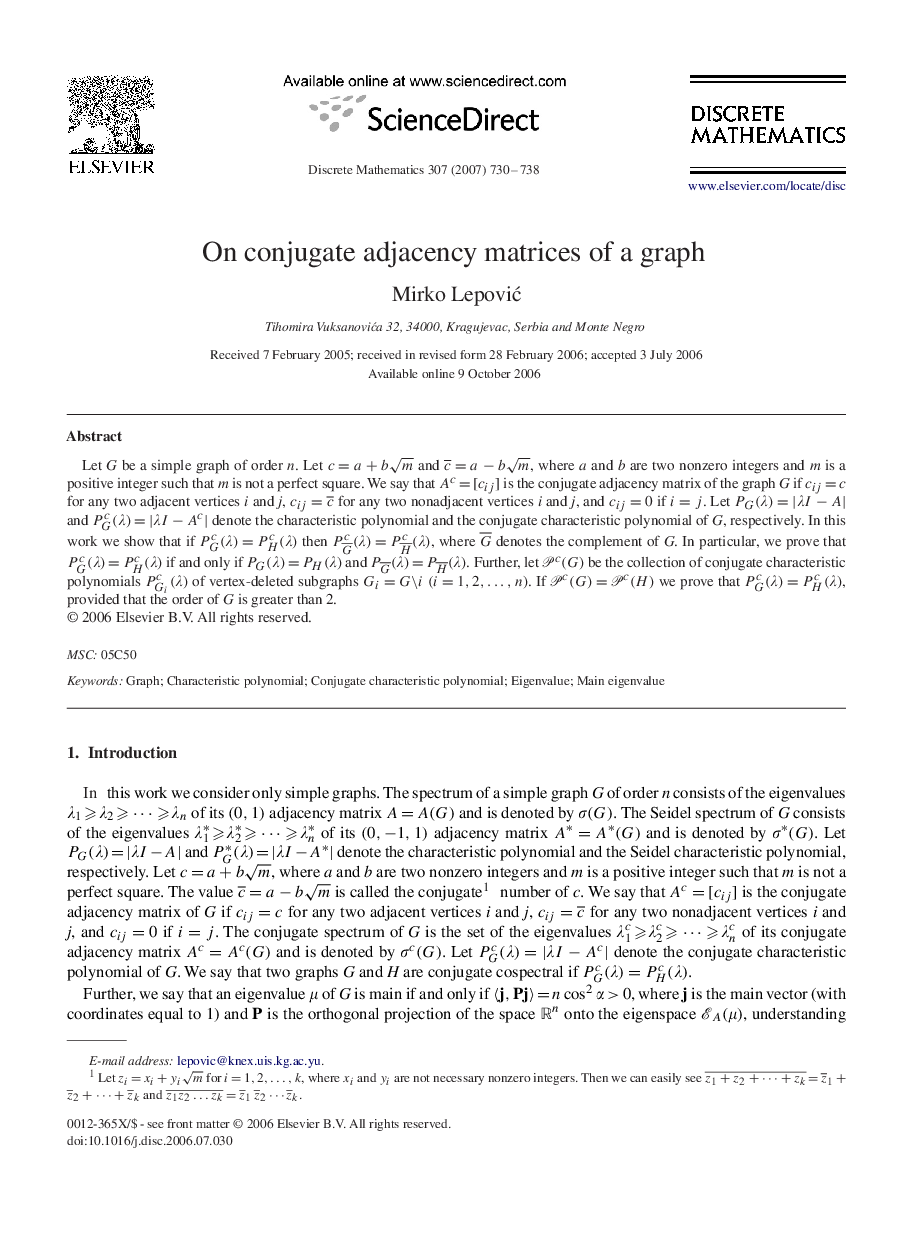| Article ID | Journal | Published Year | Pages | File Type |
|---|---|---|---|---|
| 4650485 | Discrete Mathematics | 2007 | 9 Pages |
Let G be a simple graph of order n . Let c=a+bm and c¯=a-bm, where a and b are two nonzero integers and m is a positive integer such that m is not a perfect square. We say that Ac=[cij]Ac=[cij] is the conjugate adjacency matrix of the graph G if cij=ccij=c for any two adjacent vertices i and j , cij=c¯ for any two nonadjacent vertices i and j , and cij=0cij=0 if i=ji=j. Let PG(λ)=|λI-A|PG(λ)=|λI-A| and PGc(λ)=|λI-Ac| denote the characteristic polynomial and the conjugate characteristic polynomial of G , respectively. In this work we show that if PGc(λ)=PHc(λ) then PG¯c(λ)=PH¯c(λ), where G¯ denotes the complement of G . In particular, we prove that PGc(λ)=PHc(λ) if and only if PG(λ)=PH(λ)PG(λ)=PH(λ) and PG¯(λ)=PH¯(λ). Further, let Pc(G)Pc(G) be the collection of conjugate characteristic polynomials PGic(λ) of vertex-deleted subgraphs Gi=G⧹iGi=G⧹i(i=1,2,…,n)(i=1,2,…,n). If Pc(G)=Pc(H)Pc(G)=Pc(H) we prove that PGc(λ)=PHc(λ), provided that the order of G is greater than 2.
